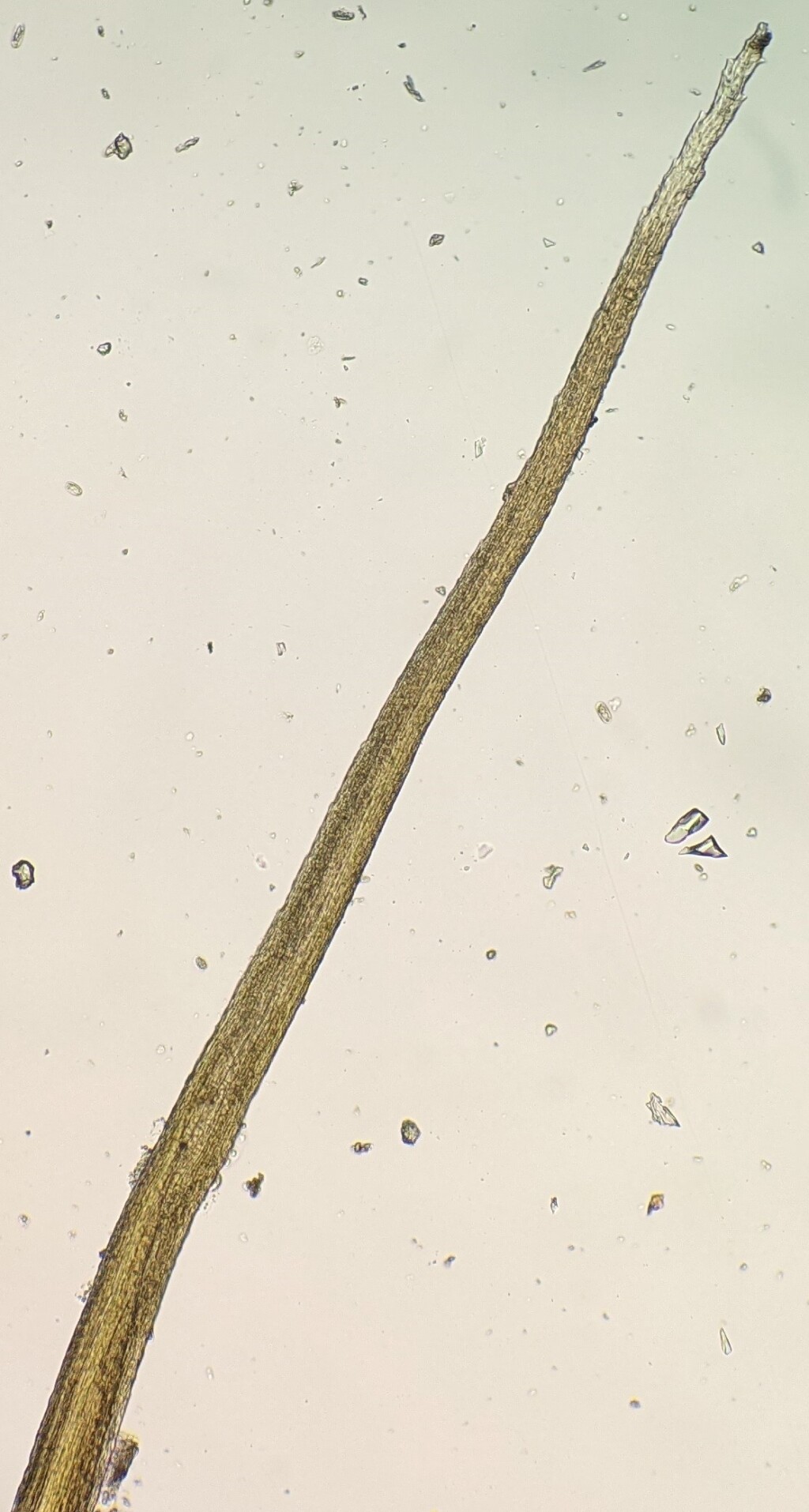Ditrichum cylindricarpum
(Müll.Hal.) F.Muell.Monoicous. Tufts or scattered stems on soil or rock. Stems 1–3 cm long, simple or sparingly branched. Leaves spreading, occasionally ±erect, flexuose, contracted abruptly into linear subula from broad oblong sheathing base, to 5 mm long or more, concave at base; apices acute; costae excurrent, occupying most of subula width; margins denticulate, plane, with an inconspicuous border of more elongate cells near base; cells of subula quadrate to shortly rectangular, bistratose towards base of subula away from margins, 10–20 μm long, 6–8 μm wide, smooth; cells of leaf shoulder bistratose away from margins, at least adjacent to costa, subquadrate to shortly rectangular, 8–16 μm long, 8–10 μm wide, smooth; cells of base unistratose, quadrate to irregular 40–60 μm long, 8–12 μm wide, smooth. Setae 1–3 cm long or longer, reddish-brown. Capsules erect, cylindric, straight, 2.5–5 mm long. Peristome of 16 teeth divided to near the base into two filaments. Operculum rostrate to oblique-rostrate from conic base, c. 0.6–1.25 mm long.
Wim, GipP, CVU, GGr, EGL, EGU, WPro, HSF, HNF, OtR, MonT, HFE, VAlp. Widespread and common along and south of the Great Dividing Range, mostly in embankments or margins or tracks or watercourses, or among roots of fallen trees or against stumps among sclerophyll forest, and occasionally on bare soil among rock outcrops. Also WA, NSW, ACT and Tas. New Zealand, Fiji and Chile.
 Spinning
Spinning